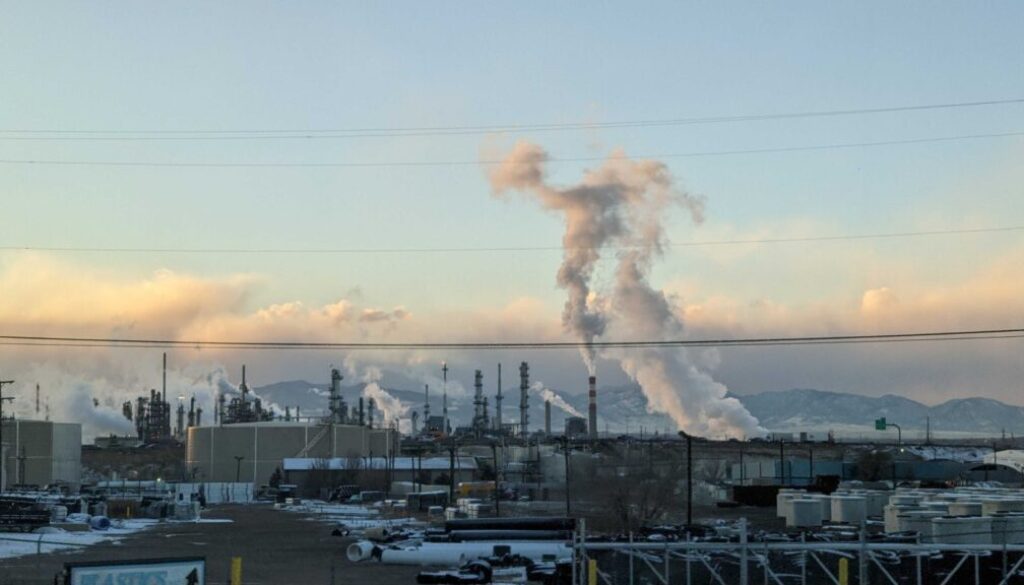Hazardous chemical accidents happening with “alarming frequency”
Hazardous chemical accidents are occurring almost daily, on average, in the United States, exposing people to dangerous toxins through fires, explosions, leaks, spills and other releases, according to a new analysis by nonprofit researchers.
The report, which was prepared by Coming Clean, in conjunction with a network of environmental and economic justice organizations in the Coalition to Prevent Chemical Disasters, documents what it calls an “alarming frequency” of accidents, and comes a month before US regulators are expected to release final rules aimed at preventing such incidents. It comes one day after an explosion and fire at a Texas petroleum processing plant injured at least one plant worker and triggered evacuations and stay-at-home-orders to community residents.
The report is in line with a prior analysis revealed in The New Lede in February, which reported such incidents were happening approximately every two days. The new report shows 829 hazardous chemical incidents from Jan. 1, 2021, through Oct. 15 of this year, or roughly one every 1.2 days. The report includes revised higher numbers for 2021 not included in the February analysis that reflect incidents at a number of Texas facilities amid extreme cold temperatures in February of that year. The research is based on capturing incidents of chemical spills via monitoring news sources; researchers say the figures should be regarded as conservative because not all of them are reported in the news media.
The majority of the incidents tallied are connected to the fossil fuel industry, including the use, transport, production and disposal of fossil fuels and fossil fuel products, according to the report, which is accompanied by a searchable database of chemical incidents.
“Chemical disasters are happening across the entire chemical supply chain, which depends on fossil fuels for feedstock, energy and distribution,” said Maya Nye, federal policy director for Coming Clean. “So not only are the production of these chemicals contributing to chemical disasters, they are contributing to climate change, and endangering worker and community safety throughout their existence.”
There has been increased scrutiny on chemical accidents in the aftermath of a Norfolk Southern train carrying hazardous chemicals derailing in the Ohio village of East Palestine in February. Emergency crews released toxic vinyl chloride from five cars and burned it to keep them from exploding; residents have reported health concerns linked to the incident.
In one of the most recent incidents noted in the report, a chemical leak and fire at a petroleum refinery in Louisiana in August led to community evacuations. The leak involved a petrochemical used to make gasoline that can contain cancer-causing benzene.
Texas is the top state for these incidents, which is not surprising given the state ranks highest in terms of the number of facilities – 1,558 – registered with the US Environmental Protection Agency’s (EPA) Risk Management Program, the report notes. Overall, there are close to 12,000 facilities across the nation that house “extremely hazardous chemicals” in amounts that could be harmful if accidentally released, according to a Government Accountability Office (GAO) report issued last year.
The incidents noted in the new report led to 43 deaths, and more than 150 incidents resulted in injury, hospitalization, and/or reports of acute symptoms following a chemical exposure event. Close to 200 communities were advised or required to evacuate, the report found.
“We have accepted this as a norm of the chemical industry for too long,” said Mathy Stanislaus, who served as assistant administrator of the EPA’s office of land and emergency management during the Obama administration. “It’s become embedded in the business model of the chemical industry.” Citing his time in government, Stanislaus said pressure from powerful industry groups makes it challenging to implement effective regulation.
The report comes as the EPA works to finalize proposed changes to the program regulations that apply to plants dealing with hazardous chemicals; a final version is expected to be published in December. The proposed changes include enhanced emergency preparedness, increased public access to information about hazardous chemicals risks communities face and new accident prevention requirements. The final rules are expected to take into account risks that can be heightened by extreme weather events associated with climate change, such as flooding and hurricanes.
The 2022 GAO report specifically warned that over 3,200 hazardous chemical facilities regulated by EPA are located in areas that could face heightened risks due to climate change-related events. The EPA has not been “consistently” assessing how these facilities manage those risks, the GAO said.
Advocates for public safety and worker protections have battled with industry groups over the rule changes, with many advocates fearing the new rules won’t go far enough to be truly protective, while business groups say the new requirements will be overly onerous and costly.
Opponents to rule changes include the US Chamber of Commerce, the American Chemistry Council, the American Fuel & Petrochemical Manufacturers and the American Petroleum Institute, among others. The opponents say most facilities already operate safely and that the facilities impacted by any rule changes are supplying essential goods and services that are important to the economy.
Asked about the latest analysis on the rate of chemical accidents, the EPA confirmed that agency officials are “working towards” having a final rule by December that includes provisions to protect vulnerable communities from chemical accidents.
“When finalized the rule is expected to make communities safer by reducing the frequency of chemical releases and their adverse effects,” the agency said in a statement.
(A version of this story is co-published by The Guardian.)
(Featured image is of a refinery in Colorado. Photo by Jenny Lopez.)
 EWG
EWG


